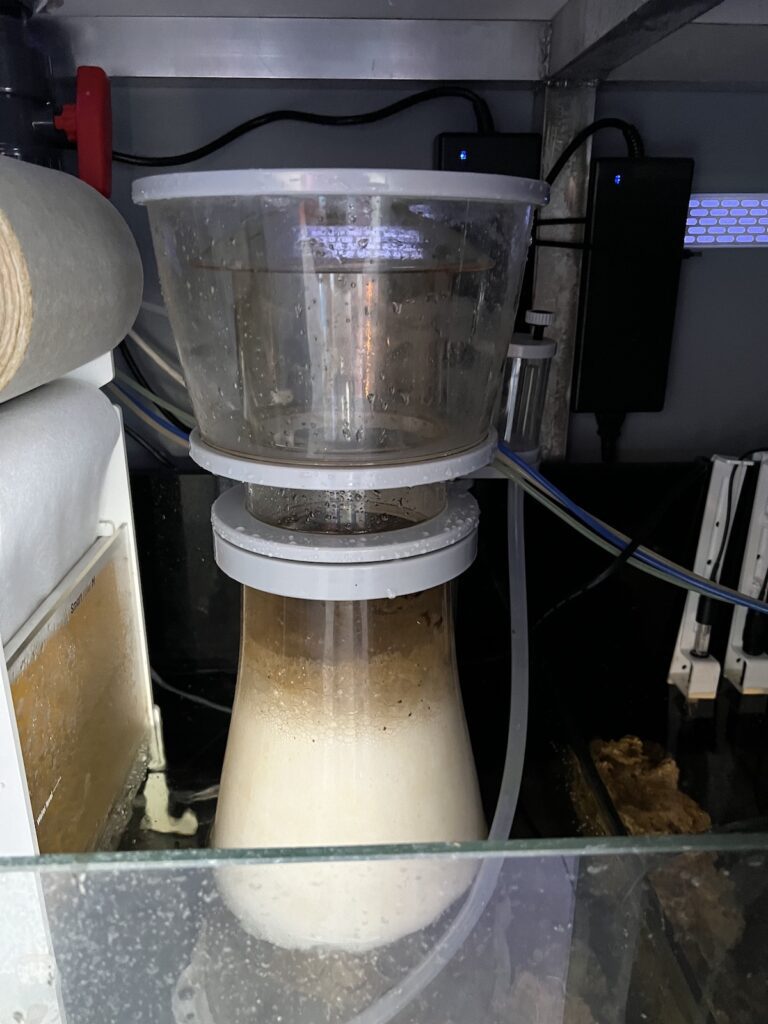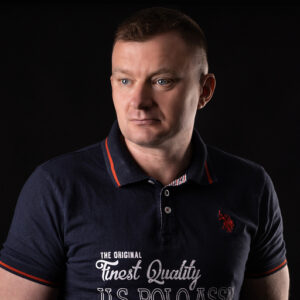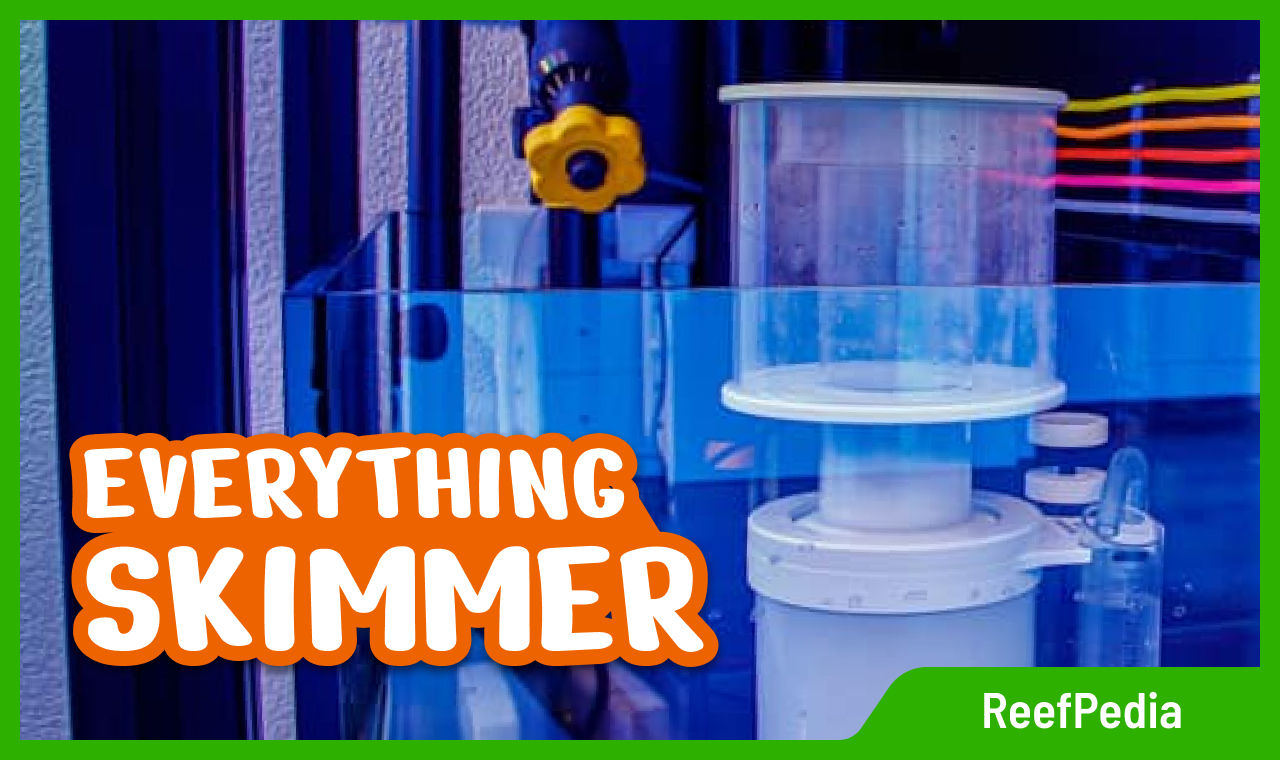The skimmer plays an important role in purifying the water of unwanted organic matter in the marine aquarium. It is a very effective method of seawater filtration.
A few words about the history
The principle of skimming is based on flotation, which is used in industry.
The flotation process is another way of separating a solid from a liquid or two different liquids. It is used to remove contaminant particles that are lighter than the liquid they are in. The flotation process is also used in coal mines to recover coal matter from the water-sludge circuit.
The process was practically applied by Guido Hickstedt, who developed a tube that comes into contact with ozone. The device worked well and produced dirty foam. Later, an ozone-free device was also developed, which worked just as well using foam and removed unwanted particles from the water.
The foaming process can be seen on the beach, when the waves of saltwater, hitting the shore, produce foam that throws dirt particles onto the shore.
Functions of the protein skimmer
The protein skimmer is designed to remove dissolved organic substances such as unwanted proteins, fish food, waste, fish excreta from the seawater. All organic material in the aquarium is eventually broken down by bacteria and transformed into ammonia, nitrates and phosphates. Ammonia is toxic to fish, and elevated nitrate and phosphate levels can fuel unwanted algal growth.

A skimmer is an effective way to remove this organic material before it is broken down by bacteria. The filling of this material inhibits its conversion to ammonia, NO3 and PO4.
How is a skimmer built?
Most commonly, a skimmer is shaped like a tube with an air bubble dispersal system. The air is supplied by a pump that sucks in the water and mixes it together with the air. The air is supplied through a hose to the pump inlet. At the pump inlet there is a venturi tube which mixes the water with the air and feeds it into the skimmer. The air bubbles that enter the skimmer reaction tube attach the dirt to themselves. The foam rises, a. at the top of the skimmer there is an end pipe through which the dirty foam falls into the cup. The skimmer cup is removable. When it fills, remove it from the skimmer, pour out the contents and clean the cup.
Types of protein skimmers
Indoor protein skimmers: designed for installation inside an aquarium, they are usually powered by a single protein skimmer pump. They are usually installed in sumps.
External protein skimmers: watertight skimmers that use a single pump and can be installed outside the aquarium. This type of skimmer has a feed pump on the outside.
Recirculating protein skimmers: use two pumps; one pump to supply the skimmer with water and a second recirculating pump to produce foam.
Needle rotor skimmers: use a needle rotor to mix water and air. This impeller efficiently mixes water and air to produce foam. This is the most popular family of skimmers. Practically every skimmer on the market is equipped with a pump, based on a needle rotor. Such impellers have dozens of needles instead of blades, which are responsible for producing foam.
Venturi nipple skimmers: water is supplied to such skimmers by a circulating pump. Air is supplied to the venturi nipple. The air at the venturi connector is sucked in under pressure. In the nozzle itself, the air is drawn in, broken up into small bubbles and mixed with water. Most commonly, such solutions are used in huge skimmers, which are used to build large tanks.
Is a skimmer essential?
A skimmer is a very effective form of removing impurities from the water. You would need to build a sizable filtration system to replace its operation (it all depends on the number of fish). It can be assumed that with a smaller fish stocking in a fairly large aquarium, an alternative form of filtration, such as a sizable refugium, can be created. The only disadvantage of a skimmer is that it removes some good components from the water. However, this can be easily remedied by supplementing with water additives.
How to size a skimmer for your tank?
To choose the size of a skimmer, we first need to determine how big an aquarium we want to build. We need to consider whether we will want a large fish stocking. For SPS tanks, aquarists often install oversized skimmers.
The second consideration is the space in the skimmer and the height of the cabinet. We need to choose the skimmer, or the other way round – build the sump and choose the height of the cabinet – so that the skimmer fits inside. In this case, it is worth remembering to still leave room for the skimmer cup to be removed freely.
Benefits of having a skimmer
Cleans the water of dirt. Stabilises the pH level in the aquarium and oxygenates the water.
Servicing a protein skimmer
The skimmer needs to be cleaned regularly to keep it efficient. The most commonly cleaned items are the skimmer cup and the pipe on the inlet to the skimmer cup. A regularly cleaned skimmer inlet pipe allows the skimmer to work efficiently…. While doing this, I also recommend cleaning the pump inlet by hand so that it is always unblocked.

We need to remember to clean the skimmer pump regularly to allow for efficient air intake and regular skimmer operation. Personally, I wash the pump every fortnight, but the frequency depends on the level of dirt in the aquarium.
About the author

Marek Protasewicz
Reefkeeping has been my passion for over 10 years now. I love learning. The hobby has taught me many valuable lessons, patience being the best example.
Combining work and passion is my path. I run Crazy Coral, a marine aquarium shop, for a number of years. Building this business from the scratch I learnt from my own mistakes at a heavy cost.
Later I managed a project aimed at development of methods for quick growth of Corals in non-natural conditions. The project was carried out by Get Sales, Poland.
Presently, I am responsible for distribution strategy at Reef Factory, of which I am a
co-founder. The company produces smart devices for marine aquaristics.
The last projects I have been involved in are Social Reef and ReefPedia.



